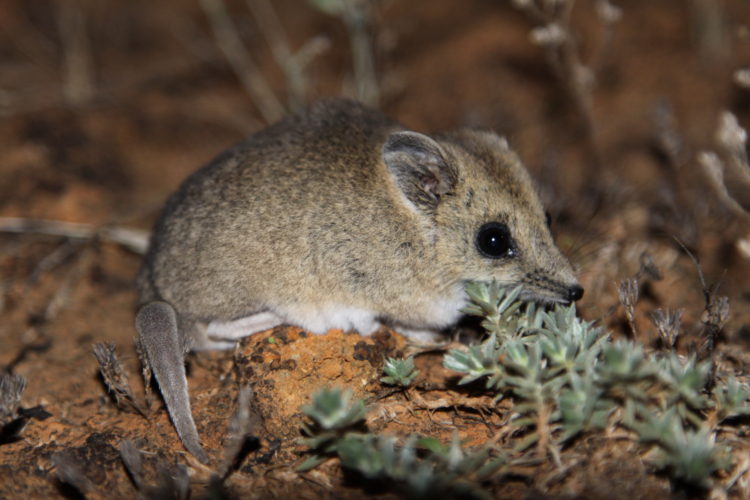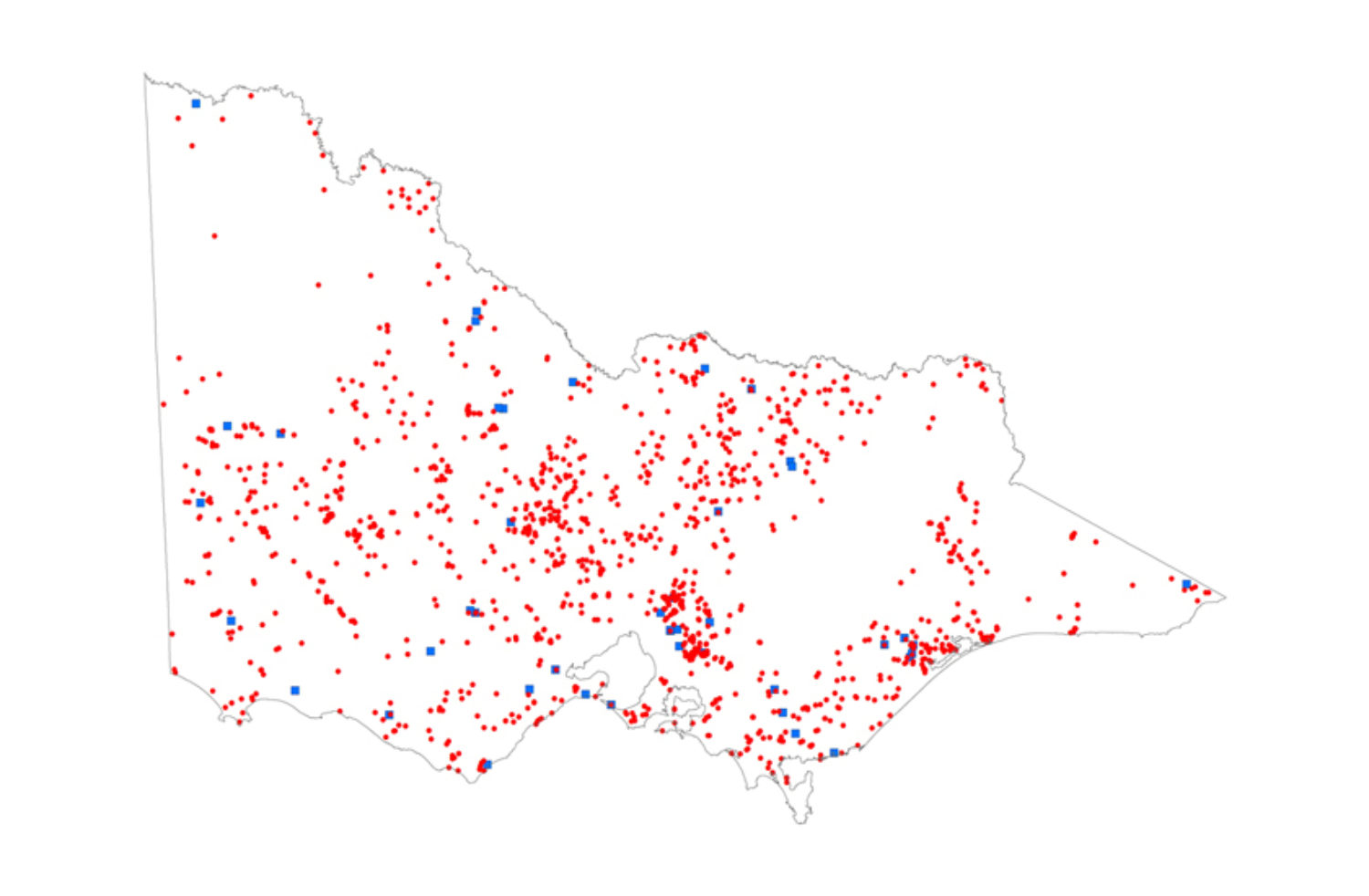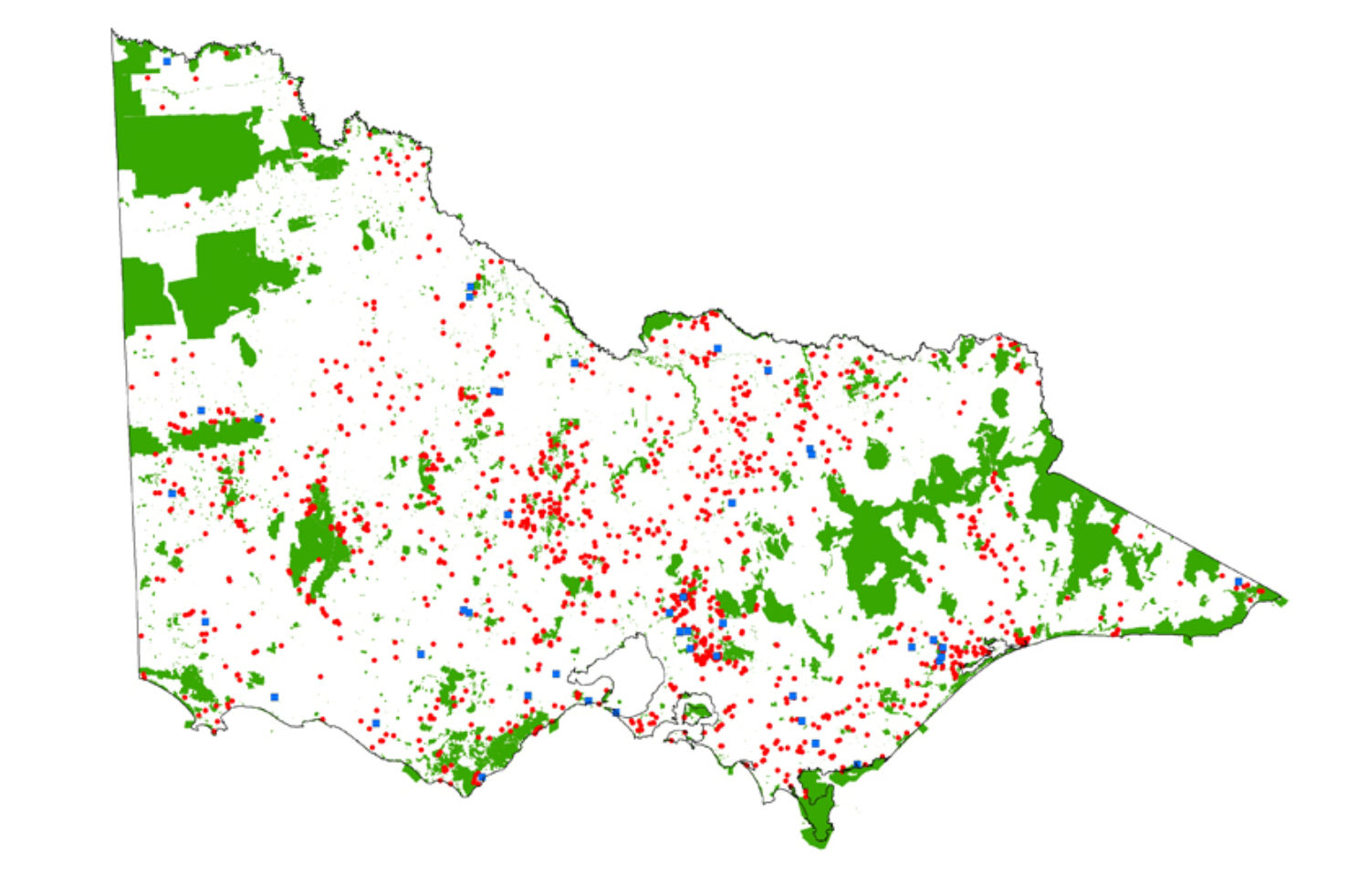Trust for Nature has an important role to play in biodiversity conservation in Victoria.
Our Statewide Conservation Plan guides our work, alongside Trust for Nature’s Strategic Plan, to identify and achieve conservation goals across Victoria. The Plan clearly defines our conservation priorities and priority areas. Taking a statewide perspective of the value of private land for healthy ecosystems, the Plan provides a baseline for achieving our conservation targets across the state.
Our conservation objectives
The six conservation objectives defined for the Conservation Plan are to:
- Increase the protection of ecosystems and species at a landscape scale
- Increase protection of priority ecosystems
- Increase protection of priority aquatic and coastal ecosystems
- Increase protection of habitat for priority species
- Enhance and protect landscape connectivity and restoration
- Maintain and improve condition of ecosystems and species
You can find a more detailed breakdown and rationale for each objective in the full Statewide Conservation Plan.
The current Statewide Conservation Plan (2021-2030) replaces the previous version (2013-2020). Read the previous version below.
Biodiversity and land tenure in Victoria
With 62 per cent of the state privately owned, Victoria has the highest proportion of private land of any state and territory in Australia. It is also the most highly altered state or territory in terms of vegetation loss – 79 per cent of the native vegetation remaining on private land is considered threatened, and nearly 90 per cent of all under-represented Ecological Vegetation Classes (EVCs) in Victoria occur on private land.
Based on scientific data obtained from government agencies and other conservation bodies, the Statewide Conservation Plan assesses the occurrence and status of terrestrial ecosystems, aquatic ecosystems and threatened plants and wildlife on private land.
The Statewide Conservation Plan gives Trust for Nature and other conservation bodies a systematic perspective of where Victoria needs to focus its private land conservation activities. The Statewide Conservation Plan identifies 18 focal landscapes across Victoria that will make the greatest contribution towards conservation on private land. It also identifies the species most at threatened and in need of protection.

Our contribution to national and international conservation targets
The National Reserve System represents Australia’s system of formally protected areas which help contribute to international protection commitments under the 1993 Convention on Biological Diversity. These were refined most recently in 2011 in what are known as the Aichi Biodiversity Targets, with target 11 stating that:
By 2020, at least 17% of terrestrial and inland water areas and 10% of coastal and marine areas, especially areas of particular importance for biodiversity and ecosystem services, are conserved through effectively and equitably managed, ecologically representative and well-connected systems of protected areas and other effective area-based conservation measures, and integrated into the wider landscape and seascape.
Trust for Nature’s conservation covenants and its network of private conservation reserves contribute to these national and international targets as formally protected areas. They have an especially important role in Victoria’s rural landscapes where most land is privately owned and the only way to achieve the 17 per cent protection target is through additional protection on private land – for example in the Victorian Volcanic Plains, Wimmera, Victorian Riverina and Strzelecki Ranges bioregions. Targeting these under-represented bioregions for additional long-term protection of habitat on private land is a key conservation priority for Trust for Nature.
Conservation and climate change
Climate change is already having an impact on biodiversity in Victoria, and this will increase in severity in future. Predicted effects of climate change in Victoria include more days over 35°C, less annual rainfall, fewer frosts, more days of extreme fire danger and more extreme floods and droughts. These changes are already being shown, or are predicted, to impact on biodiversity through reduced water flows in rivers and wetlands, reduced groundwater recharge, increases in weeds and pest animals, and increases in fire intensity and frequency.
A major study examining the implications of climate change for protected areas across the country (the National Reserve System) has described the magnitude of environmental change predicted under continuing climate change. The composition of plant species in vegetation communities may change by more than 50 per cent by 2070. Major structural shifts in vegetation are also predicted to occur over the same time period, with a move from woodlands to open woodlands, mallee to chenopod shrublands and tall open forests to open forests. The study also highlighted how climate change will exacerbate the current impacts of habitat fragmentation, habitat degradation, inappropriate fire regimes, extreme climatic events and invasive species on existing ecosystems, plants and animals by increasing the overall level of environmental stress, such as reduced moisture availability leading to reduced food resources and decreased populations.
At the ecosystem scale, climate change is already affecting, or is predicted to affect, most animal and plant communities by altering the availability of moisture, food resources and suitable habitat. In turn, these changes are considered to be the driving cause of declines in the abundance of some fauna groups due to: loss of suitable habitat and subsequent contractions in range or population size; increased mortality as a result of loss of food; reduced productivity because of food shortages; or increased competition for resources by some species expanding their range in response to changed climatic conditions.
In the context of climate change, conservationists are focusing on:
Continuing habitat protection and expansion of the National Reserve System
Protection of key refuges, being areas that are likely to retain habitat and climatic conditions suitable for a species whose range is predicted to contract in the context of climate change
Increased focus on pest plant and animal management, especially new and emerging species, and
Appropriate fire management and/or prevention.
The Plan identifies 356 species of plants and 56 species of wildlife as priorities for conservation on private land. Many of these are classified as nationally threatened, and are listed as endangered or vulnerable in Victoria. Nearly 60 per cent of these priority species have been recorded to date from Trust for Nature covenants and reserves, demonstrating the importance of these private protected areas for maintaining these species.

The Statewide Conservation Plan identifies 18 focal landscapes across Victoria. These landscapes have been assessed as being capable of making the greatest contribution towards nature conservation on private land and maintaining the viability of ecosystems and species.
Collectively, the 18 focal landscapes encompass:
- 13.5 per cent (nearly 2 million hectares) of all private land in Victoria
- 62 per cent of the Trust’s protected areas (including both covenants with landholders and Trust
properties) on private land - representation of every under-repesented IBRA bioregion and subregion in Victoria,
altogether comprising 90% of the private-land extent - 36 per cent of all native vegetation remaining on private land in Victoria
- 40 per cent of the extent of under-represented EVCs occurring on private land
- 45 per cent of the extent of climate refuges occurring on private land
Since 1972, Trust for Nature has permanently protected more than 111,000 hectares of private land for conservation in Victoria. We’ve achieved this through conservation covenants with landholders, acquiring land as our conservation reserves, and our Revolving Fund. To date, Trust for Nature has registered over 1,600 conservation covenants covering more than 78,000 hectares of private land across Victoria, protected forever.
Trust for Nature’s reserves, and private properties protected by a Trust for Nature covenant, are recognised as part of Australia’s protected areas system, known as the National Reserve System (NRS), and the global network of protected areas as defined by the International Union for Conservation of Nature (IUCN).



